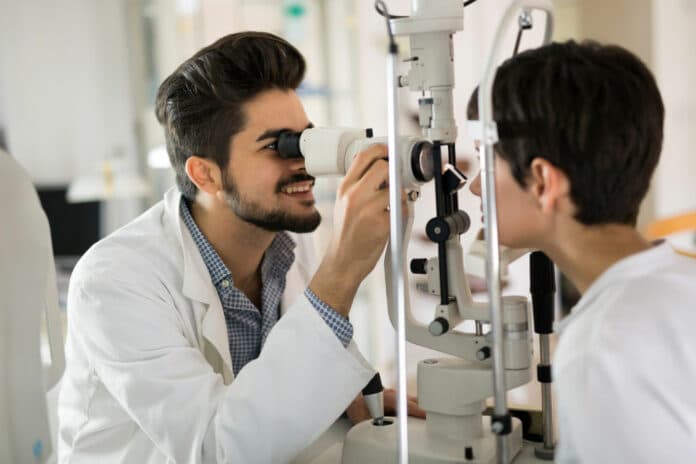Stanford Medicine from Stanford University researchers created a new way to study eye aging by examining eye fluid. They found 26 proteins out of 6,000 that can tell how old the look is. With the help of artificial intelligence, they made a ‘clock’ to show which proteins make the eye age faster in different diseases. This could help find new treatments for various eye problems.
The study, published in Cell on October 19, was led by Professor Vinit Mahajan, MD, PhD, and the paper’s lead author is Dr. Julian Wolf, MD, a postdoctoral scholar in Mahajan’s lab. They plan to use the same ‘clock’ approach with other body fluids to create better medicines for different illnesses.
Vinit Mahajan said, “This is one of the best connections ever made that suggests disease triggers accelerated aging.”
To get valuable insights from small, renewable samples, Mahajan and his team created a method called TEMPO, which stands for ‘tracing expression of multiple protein origins.’ TEMPO lets researchers track proteins to specific cells where the genetic material responsible for making these proteins is located. This helps them figure out which cells are causing diseases. The goal is to use this information to create personalized treatments.
Mahajan explained, “The first step in developing effective therapy is understanding the molecules. Even if patients have the same disease, they can show different symptoms at the molecular level. Our developed molecular fingerprint allows us to select drugs that suit each patient individually.”
To uncover which cells contribute to aging eyes and various eye diseases, the research team studied liquid samples from the eye’s aqueous humor (the fluid between the lens and cornea) taken during surgery. They collected fluid from patients with diabetic retinopathy, retinitis pigmentosa, and uveitis.
Using eye fluid from 46 healthy patients, the team trained an AI to predict a person’s age. Then, they tested whether a group of 26 specific proteins in the fluid could accurately expect a patient’s age.
Comparing the fluid from diseased eyes to healthy eyes, they found that patients with eye diseases had proteins suggesting an older age, with differences ranging from 12 to 31 years older in various conditions.
The study’s model discovered that the cells indicating increased age differed for each disease: vascular cells in late-stage diabetic retinopathy, retinal cells in retinitis pigmentosa, and immune cells in uveitis.
Surprisingly, the research also revealed that some commonly targeted cells in treatments are not the main culprits in the diseases. For example, in diabetic retinopathy, drugs usually aim at blood vessel cells. However, the study found that the significant protein increase from healthy to late-stage diabetic retinopathy was in macrophages, which are immune cells responsible for removing dead cells.
Furthermore, the researchers noticed that some cells showed accelerated aging before symptoms appeared. Mahajan suggested that early treatment targeting these molecular pathways could prevent irreversible disease damage.
According to Mahajan, targeting both aging and disease-related cells in the eye could improve the effectiveness of treatments. These two factors harm the eye separately but at the same time.
Mahajan expects that the TEMPO technique and aging clock can be applied to bodily fluids like liver bile and joint fluid.
By identifying these biomarkers, he hopes that researchers can conduct more successful clinical trials, offering a more detailed understanding of the cellular processes underlying diseases. Around 90% of drug candidates that work in mouse models or human cells fail in clinical trials. Understanding the cells responsible for disease and aging may enhance the chances of success in these trials.
Mahajan said, “It’s as if we’re holding and examining these living cells with a magnifying glass. We’re dialing in and getting to know our patients intimately at a molecular level, enabling precision health and more informed clinical trials.”
In conclusion, Stanford Medicine researchers’ development of the eye “aging clock” is a promising breakthrough. This clock helps us understand the eye’s aging process and opens doors to potential treatments for eye diseases.
By identifying specific cellular factors contributing to eye aging, we may improve the effectiveness of therapies. This innovation may also extend to other fields of medicine, offering hope for more successful clinical trials, ultimately benefiting patients with ocular diseases and beyond.
Journal reference:
- Julian Wolf, Ditte K. Rasmussen etal., Liquid-biopsy proteomics combined with AI identifies cellular drivers of eye aging and disease in vivo. Cell. DOI: 10.1016/j.cell.2023.09.012.
